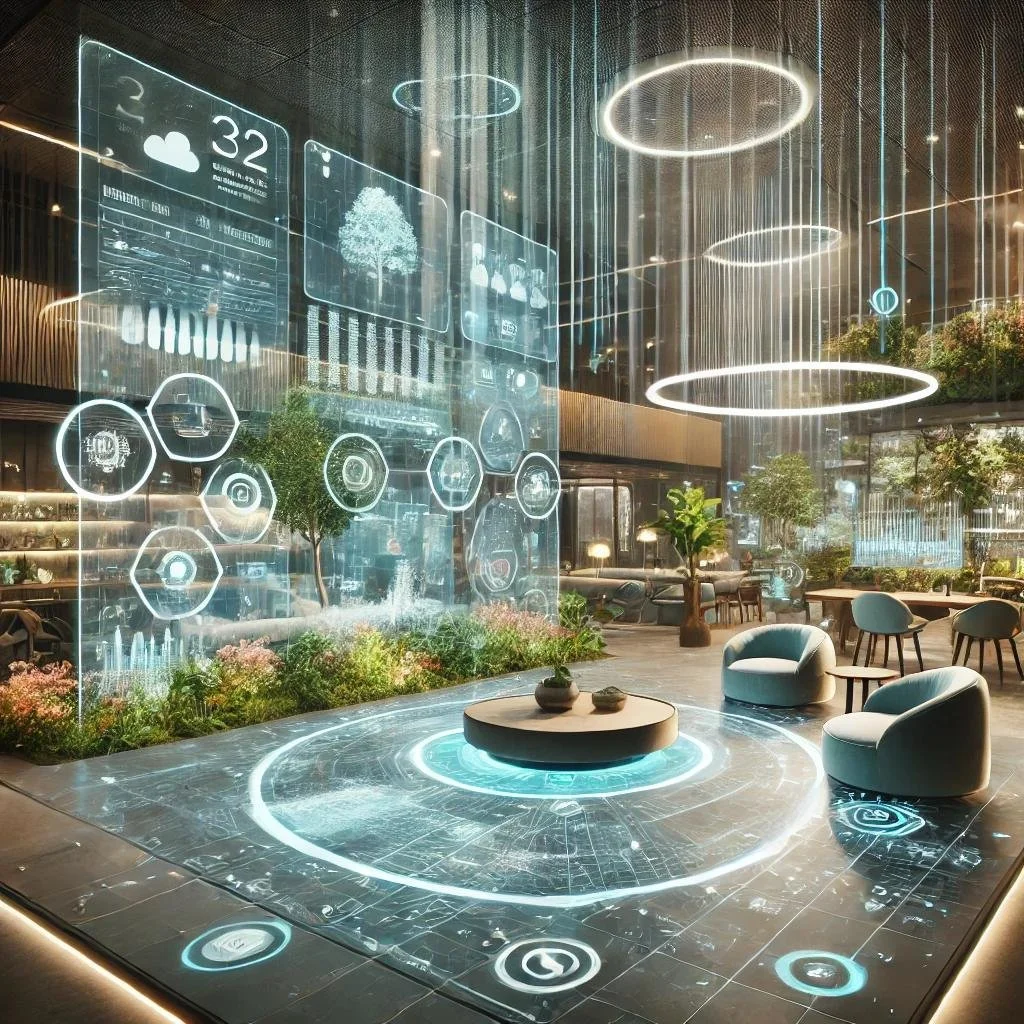This project is a collaboration that brings together researchers across multiple Stanford schools and other universities. We collaborate to generate new knowledge regarding aspects of the built environment that promote both environmental sustainability and occupant wellbeing.
Read MoreA suite of human-centered, techno-biophilic digital-physical interventions, known as Biophilic Illusions, are being designed to enhance human-building interaction by incorporating ambient reflections of nature into built environments.
Read MoreThe Hybrid Physical+Digital Spaces (HPDS) collaboration is developing an intelligent home sensing system to help older adults age in place and ease the strain on healthcare systems. We aim to design ambient intelligence to support older adult care as well as provide upskilling of PHAs to improve their career opportunities and outcomes.
Read MoreWe are developing a novel tool adapted from prior work to quantify indoor nature dose using ray casting in 3D models of buildings. This tool is being used to explore how much and what kind of access to nature indoors best supports multiple occupant wellbeing outcomes.
Read MoreGlobally, an estimated twenty-eight million people are trapped in forced labor. In this project, we aim to develop a framework for geochemically identifying and/or verifying the origin of imported cement and its constituent materials.
Read MoreIn this project we are using interpretable machine learning methods to predict the risk of forced labor in mining operations for raw materials across various locations. Our goal is to help equip U.S. material specifiers and government officials with tools to mitigate the importation of materials linked to forced labor and unchecked environmental impacts.
Read MoreWe seek to understand if the labeling of affordable housing developments impacts public opinion and support differently. Our goal is to understand local support for affordable housing and inform local officials, planners, developers, and advocates of promising strategies to combat the housing and climate change crises together.
Read MoreThis study explores the multidimensional impacts of sustainable retrofits on older adult resident wellbeing. We aim to develop actionable insights and a framework for future human-centric sustainable retrofit design.
Read MorePermanent supportive housing (PSH) is a type of housing designed to house and support formerly unhoused or low-income individuals. We are assessing the impact of built features, particularly features that promote greater connection to nature, on the stress and sense of belonging of PSH residents.
Read MoreThe outdoor views provided by windows has been shown to positively impact cognitive performance, emotional wellbeing, recovery, and overall satisfaction with the built environment. This project explores the impact of view out on the wellbeing of elderly residents in an affordable housing building in San Francisco.
Read More









